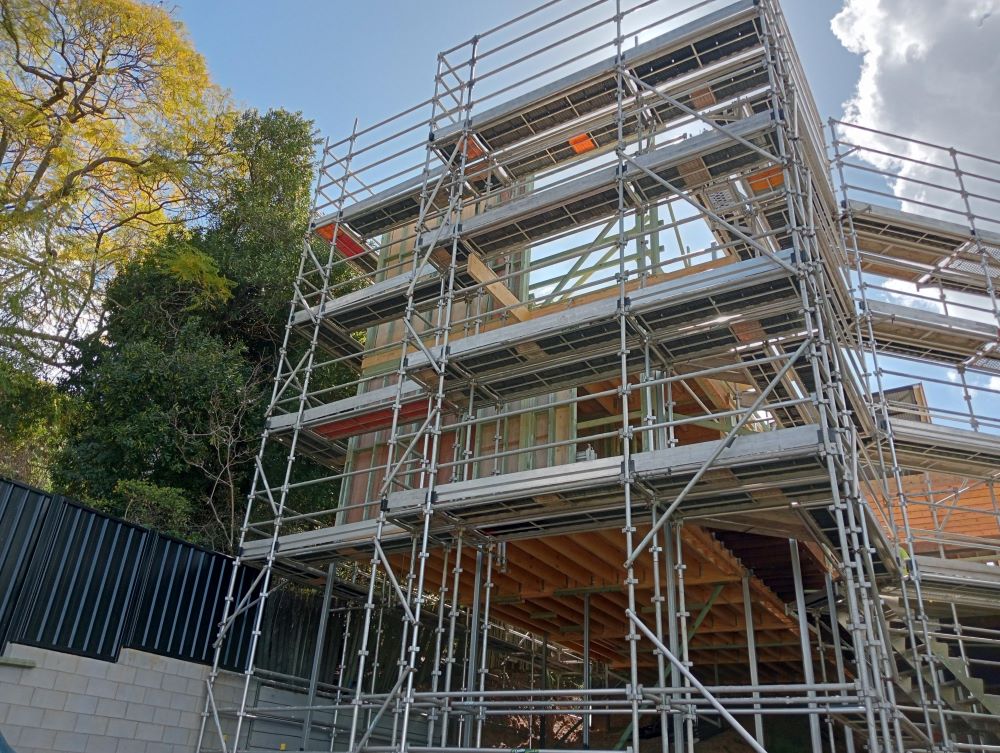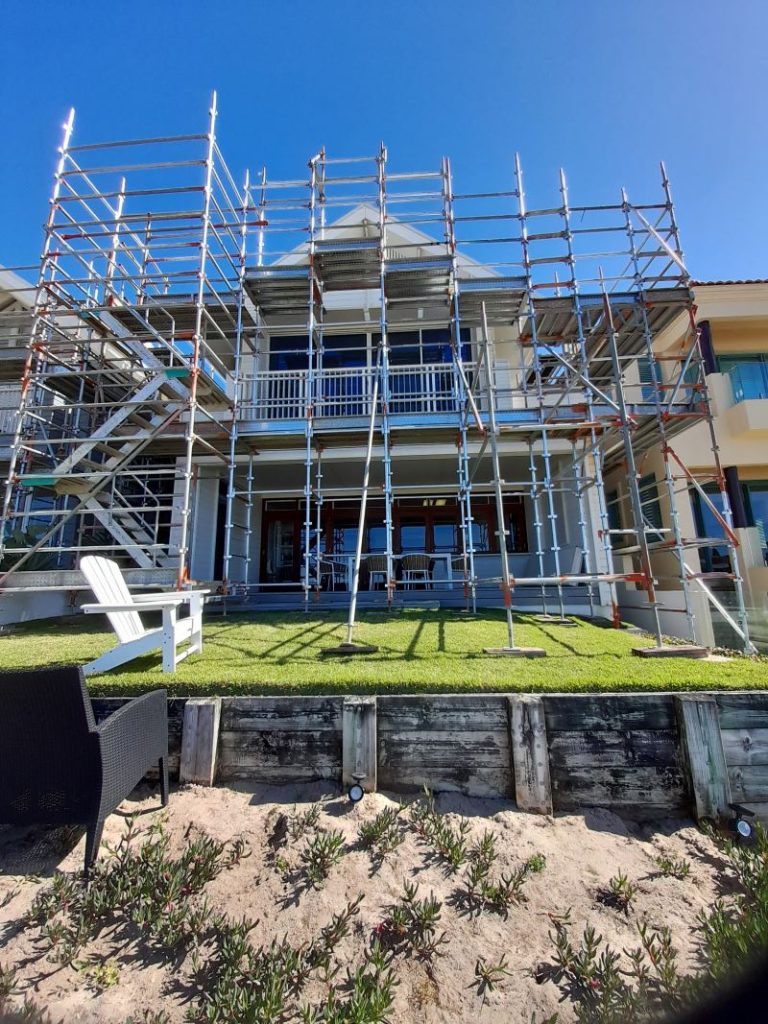Comprehensive Guide to Choosing Between Aluminium and Steel Scaffolding for Construction Projects
Selecting the right scaffold for your construction or renovation project is crucial for ensuring both safety and efficiency on-site. Among the most popular options are aluminium scaffolding and steel scaffolding. Each material possesses a unique set of characteristics, advantages, and suitability for different project demands. This detailed guide offers an in-depth comparison of these two popular scaffolding materials, highlighting their features, benefits, and ideal applications to assist you in making an informed decision tailored to your specific construction needs.
When evaluating scaffolding options, recognizing the distinct advantages of aluminium and steel scaffolding is essential. We will delve into these attributes, providing you with the knowledge necessary to make an informed choice that aligns with your project's specific requirements and safety standards.

Discover the Key Benefits of Aluminium Scaffolding for Your Construction Projects
Aluminium scaffolding is widely recognized for its lightweight composition and exceptional ease of handling, making it an outstanding choice for projects that require frequent relocation and rapid assembly. The components of aluminium scaffolding are significantly lighter than those made from steel, which enhances transportation and manoeuvrability at the job site. This characteristic is especially advantageous for contractors working in tight spaces or those needing to reposition scaffolding materials regularly, ensuring a seamless workflow and improved operational efficiency throughout the construction process.
Furthermore, aluminium scaffolding boasts remarkable corrosion resistance. This quality positions it as an ideal option for outdoor projects or environments characterized by high humidity, guaranteeing that the scaffold retains its structural integrity and aesthetic appeal over time. The corrosion-resistant features of aluminium scaffolding contribute to its long-term performance and reliability, which is particularly critical for projects that are exposed to adverse weather conditions or moisture, ensuring both safety and durability.
The setup and dismantling of aluminium scaffolds are typically quick and straightforward, as the components are designed for effortless assembly. This efficiency can lead to significant time savings on-site, especially for projects with tight deadlines. By minimizing the time spent on setup, construction teams can concentrate more on executing their tasks effectively and safely, ultimately enhancing overall productivity and project success.
Uncover the Exceptional Strength and Stability Offered by Steel Scaffolding
Steel scaffolding is renowned for its superior strength and substantial load-bearing capacity, making it an exceptionally durable option for construction projects that require robust support. This material is specifically designed to withstand significant weight and endure challenging conditions, providing a stable platform for workers even in demanding environments. Its rigidity and overall strength render it the preferred choice for projects involving heavy machinery or substantial materials, ensuring safety and reliability when working at elevated heights.
The durability of steel scaffolding is a notable advantage, particularly in extreme weather conditions or high-traffic areas where the scaffold may experience heavy usage. Unlike lighter materials, steel scaffolding is engineered to resist bending or deformation, ensuring a secure working environment for personnel. This reliability fosters confidence and a sense of safety among construction teams, allowing them to perform their tasks with peace of mind.
Moreover, steel scaffolding is acknowledged for its cost-effective longevity. While the initial investment may be higher than that of aluminium, the durability and extended lifespan of steel scaffolding make it a financially sound choice over time. This material can endure repeated use, resulting in fewer replacements or maintenance needs, thus providing significant cost savings in the long run.
When deciding between aluminium and steel scaffolding, it is vital to assess the unique requirements of your specific project. Factors such as material weight, scaffold height and size, and the environmental conditions at the job site will significantly influence your final decision.
Consulting with your scaffold hire company can offer invaluable insights, assisting you in selecting the most appropriate option for your project's specific demands. For further information on when scaffolding is necessary and the types of projects that may require it, check out our article on when to hire scaffolding.
Essential Factors to Consider When Selecting the Right Scaffold Material
Several crucial factors must be taken into account when evaluating the choice between aluminium and steel scaffolding. A thorough understanding of each scaffold material's strength and durability, weight and portability, and cost and affordability will empower you to make an informed decision that aligns with your project's specific needs and constraints.
Evaluating the Strength and Durability of Different Scaffold Materials
Both aluminium and steel scaffolds are celebrated for their strength and durability; however, they exhibit distinct qualities that may influence your choice. Steel scaffolding is generally recognized for its superior strength and load-bearing capacity when compared to aluminium scaffolding. The robust composition of steel allows it to support heavy loads and ensure stability in challenging construction scenarios, making it ideal for demanding projects.
Conversely, aluminium scaffolds are also strong and durable, although they may not support exceptionally heavy loads as effectively as steel. Therefore, it is imperative to carefully assess your project's weight requirements to determine which scaffold material best meets your operational needs and safety standards, ensuring that you choose the most appropriate option for your specific application.
Investigating Weight and Portability Features of Your Scaffolding Options
Aluminium scaffolds have a clear advantage in terms of weight and portability. Their lightweight nature allows for significantly easier handling and transportation compared to their heavier steel counterparts. This feature is particularly beneficial in smaller-scale projects or situations where scaffolding needs frequent repositioning, as it minimizes physical strain on workers and enhances overall productivity on the job site.
While steel scaffolds may be heavier, they still offer a degree of portability; however, they typically require more effort and manpower for transportation. Understanding the weight and portability aspects relevant to your project will help ensure efficient and safe scaffold use throughout your operations, leading to improved dynamics on the job site and an overall safer working environment.
Exploring the Unique Benefits of Aluminium Scaffolding
After evaluating various scaffold materials, aluminium scaffolding emerges as a standout option, presenting a range of unique advantages that make it a preferred choice for numerous construction and renovation projects.
The Lightweight Construction of Aluminium Scaffolding for Effortless Handling
A prominent advantage of aluminium scaffolding is its lightweight design. In comparison to steel scaffolding, aluminium is significantly lighter, which enhances its manageability and transportability. This characteristic not only accelerates the assembly and disassembly processes but also contributes to a more efficient workflow, ultimately reducing the overall project timeline. Moreover, the ease of handling significantly boosts worker productivity, minimizing the risk of fatigue-related accidents and enhancing overall safety on-site.
Outstanding Corrosion Resistance for Extended Performance
Aluminium scaffolding showcases remarkable corrosion resistance, making it an excellent choice for various environmental conditions. Unlike steel, which is prone to rust and deterioration, aluminium's natural resistance to corrosion ensures it maintains its structural integrity even when subjected to moisture or outdoor elements. This feature is particularly beneficial for projects conducted in damp or humid environments, ensuring that the scaffold remains safe and effective throughout its use, thereby extending its lifespan.
Efficient Assembly and Disassembly Processes for Enhanced Productivity
Another significant advantage of aluminium scaffolding is its quick assembly and disassembly capabilities. The lightweight components, user-friendly connectors, and effective locking mechanisms streamline the setup process. This efficiency is especially valuable in time-sensitive projects or when scaffolding needs frequent relocation. The rapid assembly and disassembly associated with aluminium scaffolding not only saves time but also helps reduce overall labour costs, providing a financial advantage for project managers seeking to optimize their resources effectively.

Discover the Unrivaled Benefits of Steel Scaffolding for Construction Projects
Steel scaffolding offers numerous advantages that make it a leading choice among contractors and builders when determining the optimal scaffold for your construction project.
Experience Exceptional Strength and Load Capacity with Steel Scaffolding
One of the primary benefits of steel scaffolding is its unrivaled strength and load capacity. Steel is renowned for its exceptional durability and capability to support substantial loads, making it ideal for projects where scaffolding must bear significant weights. Steel scaffold systems are meticulously designed to provide workers with a stable and secure platform, ensuring their safety while operating at elevated heights and in challenging environments.
Unmatched Durability in Extreme Environmental Conditions
Steel scaffolding is resilient against various environmental factors, rendering it suitable for harsh conditions. It can withstand adverse weather elements, including high winds, heavy rain, and extreme temperature variations. This durability guarantees that the scaffold remains stable and secure, thereby establishing a safe working environment for construction teams. Whether addressing projects such as gutter replacements or other tasks that necessitate scaffolding in demanding conditions, steel scaffolding is engineered to endure the rigours of the job, ensuring resilience and safety.
Explore the Cost-Effective Longevity of Steel Scaffolding Solutions
Steel scaffolding is widely recognized for its exceptional longevity and overall cost-effectiveness. Its inherent durability ensures that the scaffold can withstand numerous construction projects over extended periods. Unlike other materials, steel scaffolding does not degrade quickly, resulting in a reduced need for frequent replacements or repairs, thereby offering significant savings over time.
To determine the most suitable scaffold material for your specific project, it is essential to carefully assess your needs, consult with industry professionals, and consider safety standards and budgetary constraints to make the best choice.
Strategic Steps to Selecting the Ideal Scaffold for Your Construction Project
Choosing the right scaffold for your project entails a meticulous assessment of your unique needs. By thoroughly evaluating your project requirements, consulting with professionals, and considering safety and budget constraints, you can make a well-informed decision that aligns with your operational goals and enhances overall project efficiency.
Thoroughly Assessing Your Project Requirements for Optimal Scaffold Selection
Begin by evaluating the specifics of your project and the tasks that necessitate scaffold support. Key considerations include the structure's height and configuration, the expected duration of the project, and any specialized requirements that may arise during the construction process.
For instance, scaffolding for an apartment complex will have distinct specifications compared to scaffolding or guard rails required for gutter replacement. By gaining a comprehensive understanding of your project needs, you can determine the appropriate type and configuration of scaffold that will best suit your operational objectives, ensuring both safety and efficiency on-site.
The Value of Professional Consultation in Scaffold Selection
Engaging with experts, such as Cando Scaffolding, is highly recommended when navigating the complexities of scaffold selection. Our extensive industry experience provides invaluable guidance, ensuring you meet safety standards and regulatory requirements throughout your project.
Contact us today or request a quote to begin selecting the ideal scaffold tailored for your project needs, enhancing your construction experience.
The post-Scaffold Choices: Aluminium vs Steel for Your Project appeared first on https://writebuff.com/.
The Article Aluminium vs. Steel: Choosing the Best Scaffold for Your Project Was Found On https://limitsofstrategy.com
Comments are closed


This guide really gets to the heart of what can often be a complicated decision! I’ve found in my own experience that choosing between aluminium and steel scaffolding often comes down to the specifics of the project at hand. For example, I worked on a high-rise job last year where time was of the essence, and the lightweight nature of aluminium made assembly and disassembly a breeze, significantly speeding up our workflow.
Ah, the age-old debate of aluminium vs. steel scaffolding—it’s much like choosing between a sleek sports car and a trusty pickup! While aluminium is the lightweight champ of maneuverability, making it tempting for those tight job sites, steel scaffolding could be likened to a reliable friend who won’t bail on you when the going gets tough (and who can handle a bit of rough weather!).
Ah, the age-old debate of aluminium versus steel scaffolding—it’s like choosing between a fancy sports car and a sturdy pickup truck, isn’t it? Both have their merits, and yet they cater to such different vibes on the construction site. As someone who’s been around the block (or should I say, around the scaffold?), I have to say, the decision can often come down to the temperament of the project itself.
You hit the nail on the head with that analogy—aluminium as the fancy sports car and steel as the sturdy pickup truck. It’s a great way to look at the personalities of these materials in the context of scaffolding. And just like every good vehicle has its intended use, each type of scaffolding has its own sweet spot in the construction world.